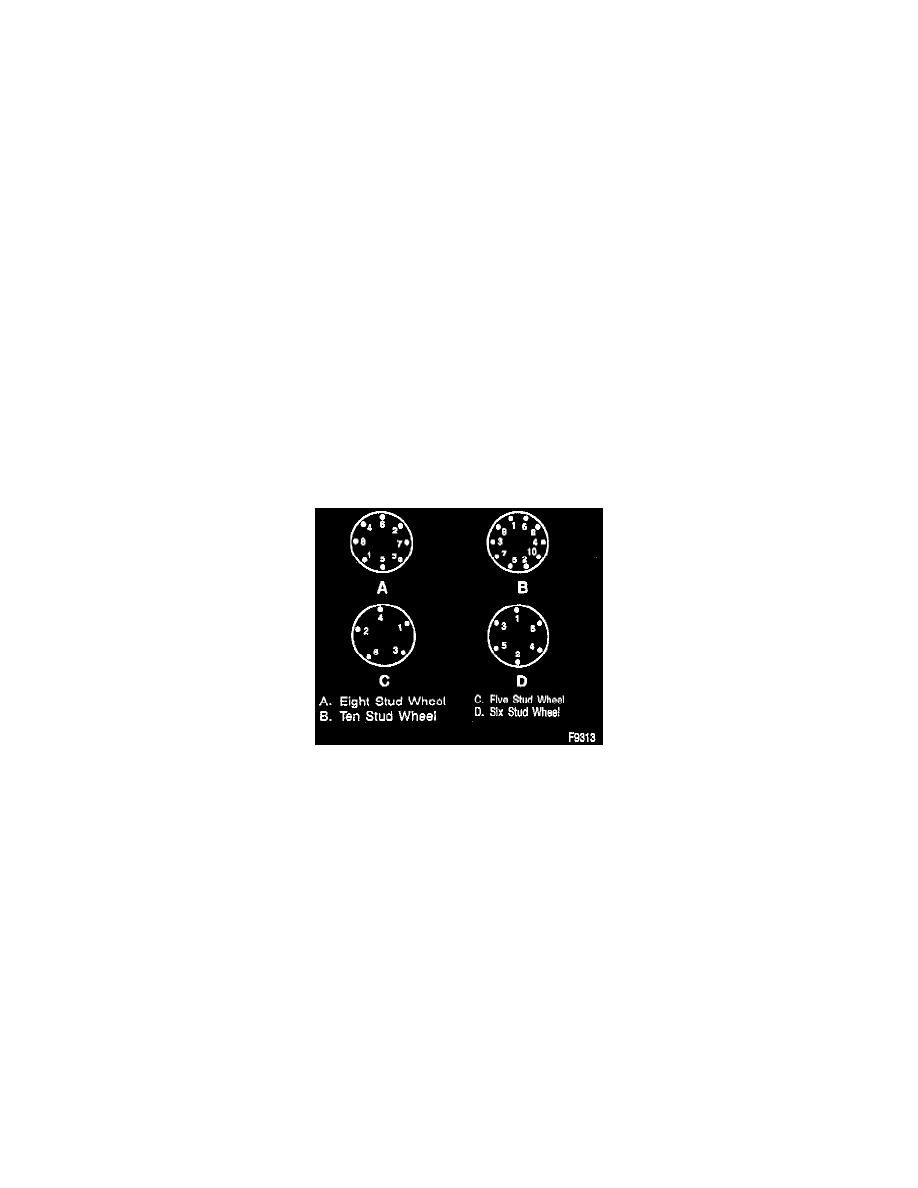C 2500 Truck 2WD V8-5.7L VIN R (1997)

Wheels: Service and Repair
On-Vehicle Service
Wheel Removal
WARNING: If penetrating oil gets on the vertical surfaces between the wheel and the rotor or drum it could cause the wheel to work loose as
the vehicle is driven, resulting in loss of control and an injury accident. Never use heat to loosen a tight wheel. It can shorten the life of the
wheel, studs, or hub and bearing assemblies. Wheel nuts must be tightened in sequence and to the specified torque to avoid bending the wheel
or rotor.
CAUTION: Sometimes wheels can be difficult to remove from the vehicle due to foreign material or a tight fit between the wheel center hole and the
hub or rotor. Excessive force such as hammering the wheel or tire can cause damage and is not recommended. Slight tapping of the tire side wall with a
rubber mallet is acceptable.
NOTE: Penetrating oil has been found to be effective in removing tight wheels. However, if it is used it should be applied sparingly to the hub surface
only.
The wheel can be removed without damage as follows:
1. Tighten all the lug nuts on the affected wheel.
-
Do not torque.
2. Loosen each nut two turns.
3. Rock the vehicle from side to side to loosen the wheel. Or rock the vehicle from forward to reverse allowing the vehicle to move several feet in
each direction. Apply quick, hard jabs on the brake pedal to loosen the wheel. If that did not free up the wheel, then rock the vehicle again from
side to side as hard as possible using one or more person's body weight to loosen the wheel. If the wheel is still tight, repeat the procedure.
Tire and Wheel Installation
^
Tool Required:
-
Torque Wrench or J 39544 GM Wheel Nut Torque Adapters (For use with pneumatic impact)
-
Or Equipment
REMOVAL
Remove or disconnect the following:
1. Raise vehicle and support with safety stands.
2. Hub cap, if required.
3. Wheel nuts.
-
Mark the location of tire and wheel assembly to hub assembly.
4. Are and wheel assembly.
WARNING: Before installing a wheel, remove any corrosion on the wheel mounting surface and brake drum or disc mounting surface
by scraping and wire brushing. Installing wheels with poor metal-to-metal contact at the mounting surfaces can cause wheel nuts to
loosen. This can lead to a wheel coming off while the vehicle is moving, possibly causing loss of control and personal injury.
5. Clean wheel nuts, bolts, and the wheel and rotor mounting surfaces.
INSTALLATION
CAUTION: A torque wrench or J 39544 must be used to ensure that wheel nuts are tightened to specification. Never use lubricants or penetrating
fluids on wheel stud, nuts, or mounting surfaces, as this can raise the actual torque on the nut with out a corresponding torque reading on the torque
wrench. Wheel nuts, studs, and mounting surfaces must be clean and dry. Failure to follow these instructions could result in wheel, nut, and/or stud
